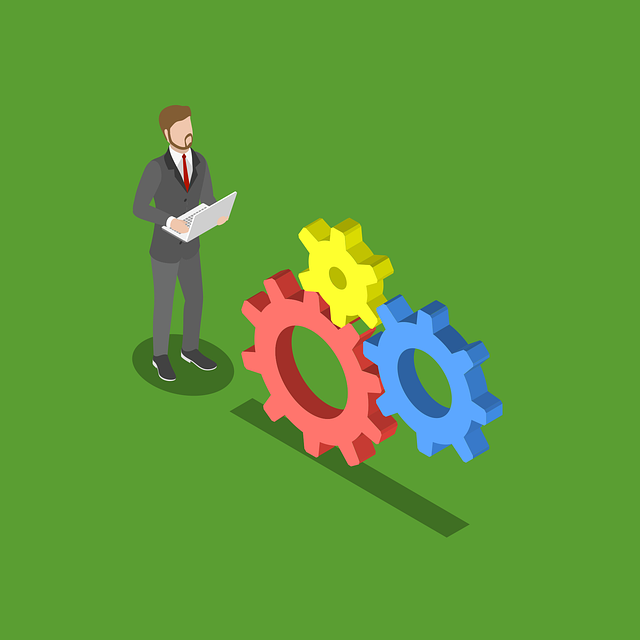Think about it, can all your efforts to attract a user to your site be wasted because of a slow loading time?
Absolutely!
Research shows that every second of page load time increases the rate at which users leave your site.
This is also taken into account by search engines.
Sites that load fast often have better rankings. User experience directly affects the time a visitor spends on your site and their satisfaction.
A slow site saps the patience of visitors and causes them to move on to another resource.
Fast-loading pages, on the other hand, keep users on your site and encourage them to explore more content.
This increases conversion rates.
Compare this to going to a restaurant and having to wait for a long time; no one wants to wait for hours, right? Search engines like Google attach great importance to user satisfaction.
Therefore, speed optimization is one of the cornerstones of a good SEO strategy.
Fast sites are deemed worthy of higher rankings by search engines.
So, if your site is fast, you have a better chance of appearing higher in search results.
That means more organic traffic.
Last but not least, speed optimization gives you the opportunity to open the gap between you and your competitors.
Many sites don’t pay enough attention to speed optimization.
If you stay one step ahead, you can impress both users and search engines.
Remember, every second counts!
The Power of Speed: The Role of Speed Optimization in SEO Success
Speed plays a vital role in the success of your website.
Visitors are in too much of a hurry to wait patiently for pages to load slowly.
So, what is the importance of speed optimization in this case?
A fast site enhances the user experience and is viewed favorably by search engines.
Slow-loading pages can lead to high bounce rates, which can lower your SEO rankings.
While waiting for a page to load, users may choose to go elsewhere.
So, speed optimization is kind of like unseen magic; when done right, it can increase your conversions and boost your organic traffic. A fast website makes it easier for visitors to access content.
Increased speed helps users stay on your site longer.
Imagine watching a video or reading an article and suddenly the page freezes!
Isn’t that frustrating?
Fast-loading pages eliminate such problems and cause users to spend more time on the site. Search engines consider speed optimization as an important factor.
Google prefers to show fast-loading sites in higher rankings, prioritizing the user experience.
In this case, speed optimization is a critical element not only for users, but also for search engines.
When you increase your speed, you can see a marked improvement in the statistics about your site. Speed optimization is important for both user experience and SEO.
Using the power of speed in the right way can take you one step ahead in the digital world.
Faster, Better: Benefits of Speed Optimization for SEO
What are the benefits of speed optimization for SEO?
First of all, search engines like sites that load faster.
Since Google has made user experience its primary goal, you can improve your site’s ranking by optimizing for speed.
A slow site can fall behind in search results, which negatively affects your visibility.
When speed becomes a ranking factor, optimization is almost a necessity. Also, a fast site allows users to spend more time on the page.
Fast-loading pages engage users and add value.
Speed is a factor that builds loyalty.
If you provide a fast experience, users may consider returning to your site. In addition, mobile compatibility is directly linked to speed optimization.
Most users now access the internet from mobile devices.
Fast loading of mobile sites increases user satisfaction.
Remember, as a user, you tend to abandon a site when you see that it loads slowly.
The same goes for your potential customers. Speed optimization is not just an option, it’s a necessity.
A fast website means a better user experience, higher SEO rankings and more conversions.
It’s time to increase your speed!
Speed Optimization and Google: How Does It Affect Search Rankings?
The impact of your website speed on user experience and search engine rankings cannot be overstated.
Internet users are impatient with slow-loading pages; if a page takes longer than a few seconds to load, most users would rather move on to another site.
So, what is the impact of speed optimization on Google rankings?
Imagine you are a user and you want to access your favorite site.
But if the page doesn’t load or takes a long time, you get frustrated and go elsewhere, right?
Google knows this too.
Slow load times reduce the amount of time users spend on the site, and that translates into a negative rating in Google’s eyes.
After all, user satisfaction is one of their primary goals.

This results in users engaging with more content and staying on your site longer.
Google perceives this as a positive signal.
A better user experience means higher rankings.
Especially with the increase in mobile devices, mobile compatibility and speed stand out among the ranking criteria. To increase the speed of your page, you need to pay attention to some technical details.
Optimizing images, removing unnecessary plugins, and browser caching can be very effective.
You can also use tools like Google’s PageSpeed Insights to measure your site’s speed and identify areas for improvement. Speed optimization both improves the user experience and increases your visibility in search engines.
Increasing your site speed puts you one step ahead in today’s digital world.
Speed is not only faster than a competitor, but also brings success.
User Experience and SEO: The Importance of Speed Optimization
Speed plays a critical role in the digital world.
If your site is slow, users can give up and go elsewhere in a matter of seconds.
Not only do you lose visitors, but your SEO rankings can also suffer.
User experience is a very important factor in the eyes of search engines, and speed directly affects that experience.
So why is it so important?
Imagine you’re waiting in line to place your order at a cafe.
After a long wait, you have to wait just as long for your order to arrive.
In that case, wouldn’t you want to leave the café and go somewhere else?
Internet users think the same way.
Fast loading times allow users to spend more time on your site.
This helps search engines consider you a more valuable resource.

If your site is slow, users will leave your page.
According to studies, if a page takes more than three seconds to load, 40% of visitors leave immediately.
This is where we understand the importance of speed optimization.
Providing a pleasant experience for users is the key to increasing your site’s traffic. The time users spend on your site and their interactions are taken into account by search engines.
A slow site will cause users to exit quickly, which will negate almost all your SEO efforts.
Speed optimization not only attracts users to the site, but also keeps them there, increasing your conversion rates. Speed optimization is at the heart of user experience and SEO.
In short, ensuring fast loading times is essential for the success of a website.
When you achieve this, you can satisfy both your users and search engines.
The Secret to Fast Loading Sites: Tips to Boost SEO
The fast loading of a website directly affects the user experience.
But it also plays a big role in SEO.
So, what is the secret to fast loading websites?
This is where some tips come into play! Images add to the visual appeal of your site, but heavy files can cause slow loading.
Optimizing images is a great way to both reduce their size and maintain their quality.
One of the most effective ways to improve your website speed is to use image files in JPEG or WebP format.
Remember, every second it takes for an image to load can cause users to abandon the site. Browser caching ensures that pages load faster when users visit them again.
This improves your site’s performance, positively impacting your SEO rankings.
When users don’t have to wait for a page to load the first time they visit, they are more likely to engage more.
Speed attracts users, so SEO improves. The theme you use in your website design also has a big impact on speed.
Light and fast themes reduce page load times.
This allows users to stay on your pages longer and explore your content better.
User experience is the golden rule of SEO.
A better experience means higher rankings! While plugins provide functionality, they can also slow down your site speed when overused.
By removing unnecessary or heavy plugins, you can significantly reduce your page load time.
Fewer plugins means a faster site!
Also, using only the necessary plugins improves your site’s performance and boosts your SEO score. Finally, the performance of the server where your website is hosted is critical.
A fast server ensures that your pages load fast.
A fast server positively affects your users’ experience and provides an advantage in terms of SEO.
A slow server can negatively affect your site’s ranking.
A fast-loading site not only impresses users, but also search engines.
By following these tips, you can increase the speed of your site and strengthen your SEO performance.
Increase Your Conversion Rates with Speed Optimization!
If your website is slow, your visitors may lose patience.
Speed optimization not only improves user experience but also has a significant impact on your conversion rates.
So why is a fast website so important?
Think about it, we hate waiting in line at the grocery store; the same is true in the online world.
Visitors can quickly move away from a page that takes a long time to load.
This is where speed optimization comes into play. User experience plays a critical role in the success of a website.
If your page loads for more than 3 seconds, 40% of your visitors may go elsewhere.
This can negatively impact your conversion rates.
Speed optimization includes many strategies, from reducing the size of images to using browser caching.
In short, making your website load fast is the key to keeping users on the page. Search engines rank faster loading sites higher.
With speed optimization, you can strengthen your SEO strategies and increase your chances of reaching your target audience.
Remember that Google’s algorithms take page load times into account.
So, the better the speed of your website, the higher you will rank in search engine results.

If your website is slow to load on mobile devices, it is easy to lose potential customers.
A mobile-friendly and fast-loading website ensures that users stay on the site.
With speed optimization, you can effectively target not only desktop users but also mobile users. Speed optimization is not just a technical requirement; it is also part of a successful digital strategy.
It’s time to take action to keep your visitors and increase your conversion rates!
Search Engines and Speed: Why Should It Be a Priority?
User Experience and Speed Relationship Speed directly affects the user experience.
A fast-loading page retains users more.
Studies show that every second longer the page load time, the loss of visitors can increase.
Fast sites help users stay on the page longer and engage more with the content.
So, building a fast website is a critical factor not only for SEO but also for user satisfaction. Search Engine Algorithms Search engines are constantly being updated to provide the best experience for their users.
Among these updates, speed is among the ranking factors.
Fast-loading pages rank higher in search results.
This is a huge advantage for businesses in terms of visibility and reach.
Speed is an important factor not only for users but also for the success of businesses. Competitive Advantage Competition is fierce in the digital world.
A fast website is a powerful tool to get ahead of your competitors.
If your competitors offer slow-loading pages, you can outpace them with your speed.
This not only attracts more visitors but also strengthens your brand image.
A fast site increases your credibility and improves user conversion rates. Understanding the relationship between search engines and speed is an important step in developing your digital marketing strategies.
Frequently Asked Questions
Which Tools Should be Used for Speed Optimization?
Tools that can be used to improve your website speed include Google PageSpeed Insights, GTmetrix, and Pingdom.
These tools analyze your page load times, identify performance issues, and offer suggestions for improvement.
Additional solutions, such as caching plugins and content delivery networks (CDNs), also contribute to speed optimization.
Why Speed is Important for SEO?
Speed is an important factor that directly affects user experience.
Slow loading sites lead to loss of visitors and negatively affect search engine rankings.
Fast sites provide better conversion rates and high user satisfaction.
How Do I Measure Website Speed?
You can use various online tools to measure website speed.
Platforms like Google PageSpeed Insights, GTmetrix and Pingdom provide page load times and performance analysis.
These tools also offer suggestions for improving your site speed.
What is Speed Optimization?
Speed optimization is the process of reducing the load time and improving the performance of a website or application.
This is achieved by improving code, images and server configuration.
Speed optimization improves the user experience and positively affects search engine rankings.
What Problems Are Caused by Slow Loading Sites?
Slow-loading sites negatively affect the user experience and lead to loss of visitors.
They can also experience a drop in search engine rankings.
Speed issues can be caused by high bandwidth usage, poor optimization, excessive HTTP requests and large file sizes.
This reduces customer satisfaction and lowers conversion rates.